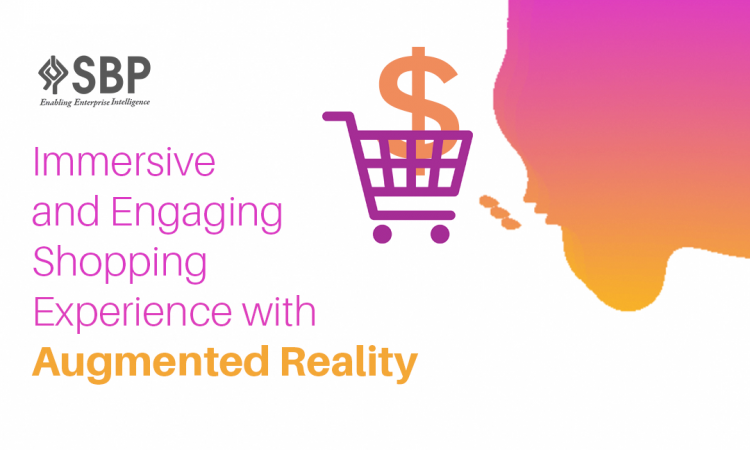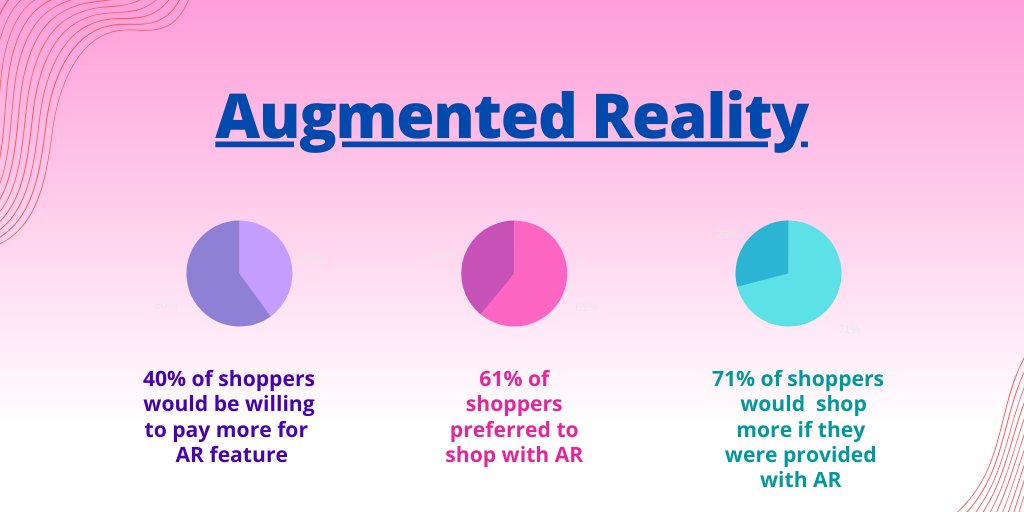
Immersive Shopping Experience with Augmented Reality
Augmented Reality (AR) has come a long way from being just a concept 10 years ago to becoming a shopping tool today for ecommerce shoppers. One of the greatest drawbacks of shopping online is the lack of tangible merchandising experience that physical stores and retail outlets provide. This is where AR comes into play. With AR, you can virtually see what the furniture will look like in your house before you buy it or what a dress will look like before you order it. The concept of online trial rooms allows people to try on clothes along with options to change patterns and to get a 360-degree view of the look. In this way, AR can work as an essential tool for Ecommerce business with visual merchandising.

A study by retail perceptions revealed 40% of shoppers would be willing to pay more for a product if they provided AR. In the same study, it was also found that 61% of shoppers preferred to shop from a store that offered AR over the stores that don’t. And lastly, 71% of the shoppers said, they would prefer to shop more frequently if they were given an option to shop through AR. Current projections indicate that AR will generate $120 billion in revenue by 2020, so retailers have every reason and opportunity to leverage this enhanced experience with shoppers.
AR can be generally categorized into these 4:
-
Marker-Based AR: Also known as Image recognition, it uses the camera to scan objects visible. It can be anything from a printed QR code to special signs. In some cases, the AR device also calculates the position and orientation of a marker to position the content.
-
Markerless AR: Also Known as location-based AR, this utilizes GPS, compass, gyroscope, and accelerometer to provide data based on user’s position. This data then determines what AR content you find or get in a certain area.
-
Projection-Based AR: Projects synthetic light to physical surfaces and, in some cases, allows to interact with it. It detects user interaction with a projection by its alterations.
-
Superimposition-based AR: Replaces the original view with an augmented either fully or partially. Using object recognition, superimposition-based AR replaces the original view and projects the entity in the required position.
With brands trying to connect better with Millennials, social media filters helped in a big way to come across as more authentic and memorable as possible. As a brand trying to reach new target audience, Ecommerce brands can make use of AR offered by social media to align their own interests with users’ inclination to share their images with friends.
Many brands are creating virtual stores to add that extra whiff of customer experience with a smartphone app. Apps can create a virtual store experience and complement with virtual aisles. They offer a compelling shopping experience, second to none, that engage customers to identify products, just like they would in an actual store.
AR in Ecommerce is a boon for retailers and brands to offer an intuitive and immersive shopping experience to their customers. It’s innocuous to say that AR will continue to grow as technology advances.



